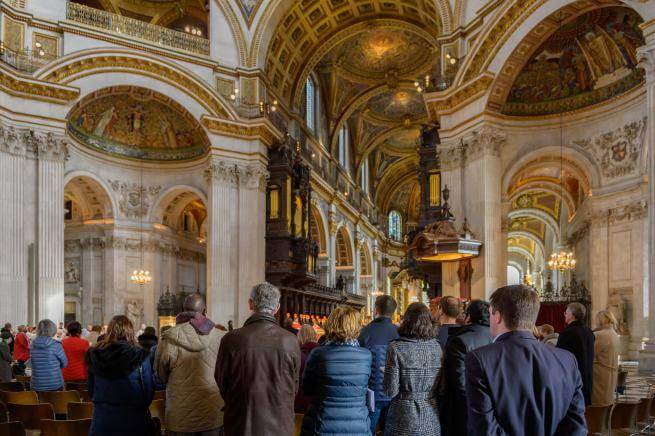Fire safety at the Cathedral
Fire safety information
We are looking to enhance fire safety at every opportunity in all of our buildings, and most importantly for all our staff, volunteers, residents at Amen Court, and the huge range of different people who come into the Cathedral.
This will be the first of a number of fire safety communications issued to all staff and volunteers and its purpose is to assist with overall fire safety.
The foundations of fire safety
The foundation stone of fire safety is by nurturing a positive fire safety culture throughout our organisation. That is a commitment: A commitment from us all to recognise that everyone has a personal responsibility for fire safety, whether that be Chapter and SLT delivering policies and procedures and ensuring there are suitable fire protection systems provided, or someone not wedging a fire door open or using electrical equipment inappropriately.
The message is that we all have personal responsibility and we should embrace that and take ownership of it. Over the coming months we hope to be delivering face-to-face fire safety training to staff and volunteers, which will assist in embedding this culture, and in explaining why it is so important. With regular communication - both in person and by the provision of information like this - we can embed this message.


Fire prevention
It is best to prevent fires rather than have to deal with them. Fire prevention covers a range of things which will be discussed more fully later. However, it involves being well trained so as to understand why certain practices and situations create a fire hazard, and that with care and attention these can be eliminated before they cause a fire. The simple fact is that most fires are preventable and in many cases it is human error or action (in the case of arson) which causes them.
Fire safety
This is the provision of active and passive systems which assist in keeping people safe in the event of a fire. Active systems include:
- an automatic fire detection and alarm (AFDA) system
- emergency escape lighting
- fire extinguishers
Passive systems include:
- fire doors
- walls, floors and enclosures which are designed to contain fires
- having safe and effective fire evacuation plans and well trained staff and volunteers
Fire safety management
This is the glue that sticks everything together. It is how an organisation delivers fire safety and includes an effective management structure; the appropriate policies and procedures, robust testing and maintenance arrangements for fire protection and building systems, and by ensuring staff and volunteers are well trained.
Training and communications
The common theme through all the elements of effective fire safety is well trained and well informed staff. That is a key focus for us moving forward. For example:
- in person training is being planned and we are currently evaluating the most effective way of prioritising and delivering it
- over time existing online fire training will be enhanced by the addition of more information/modules
- the Fire Safety Manager, Mike O'Mahoney, will make one hour available each week that he is on site for staff and volunteers to drop in and speak to him about any fire safety matters. The date/time will not be fixed because of Mike's work pattern, but people will be given advance notice before each week whenever possible.
- regular communications will be provided through our weekly newsletters, and notices to assist in embedding fire safety information - so please do take the time to read them.
We know how busy everyone is, and that there are lots of things competing for people’s time. Thankfully, most people have never experienced a fire either in their own home or workplace, however, that means it's understandable that people are not always as aware of the possibility as they could be. Training and information assist in keeping people’s focus on what can be a true life safety issue.


Fire prevention
Our fire prevention golden rules for all staff and volunteers to abide by.




